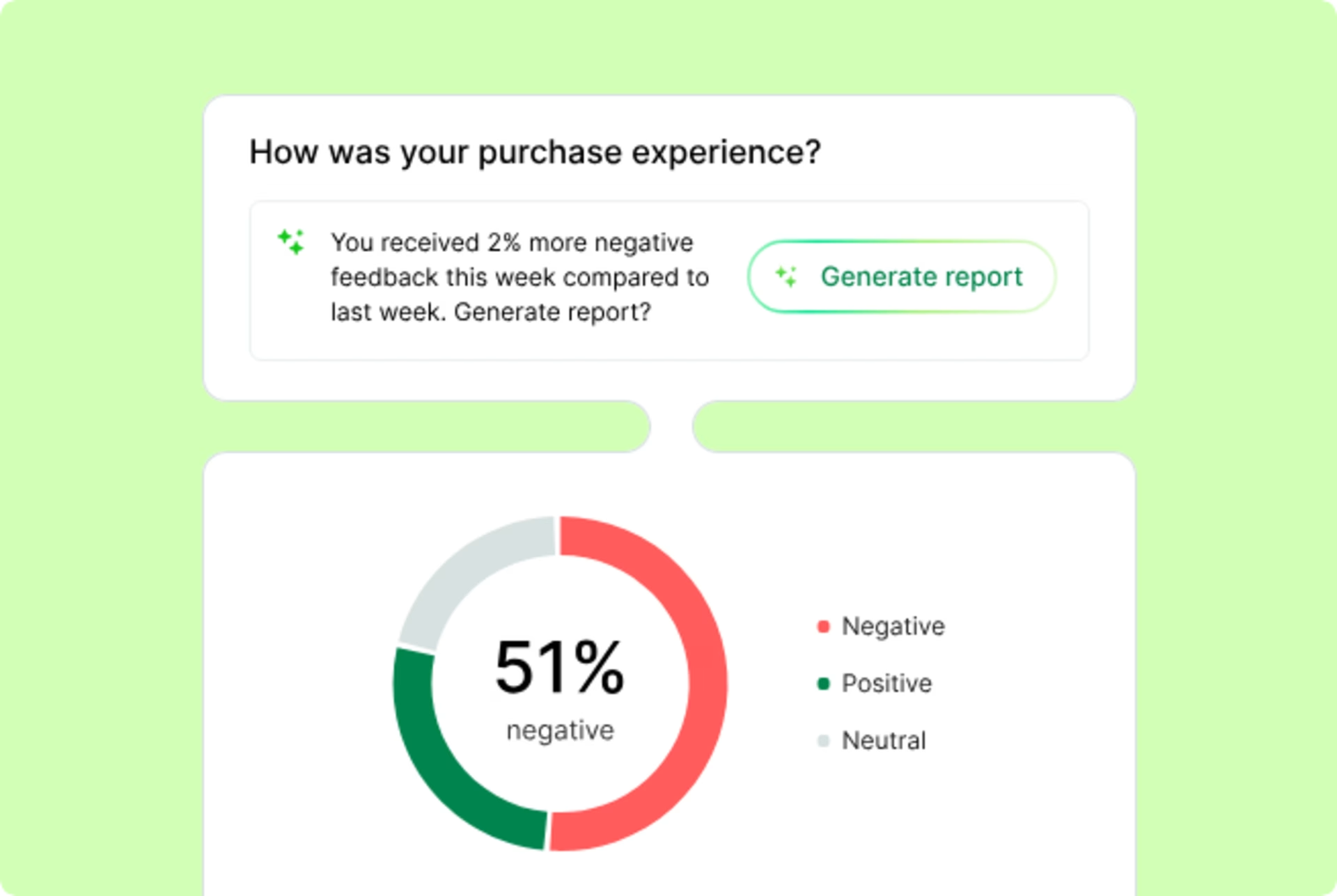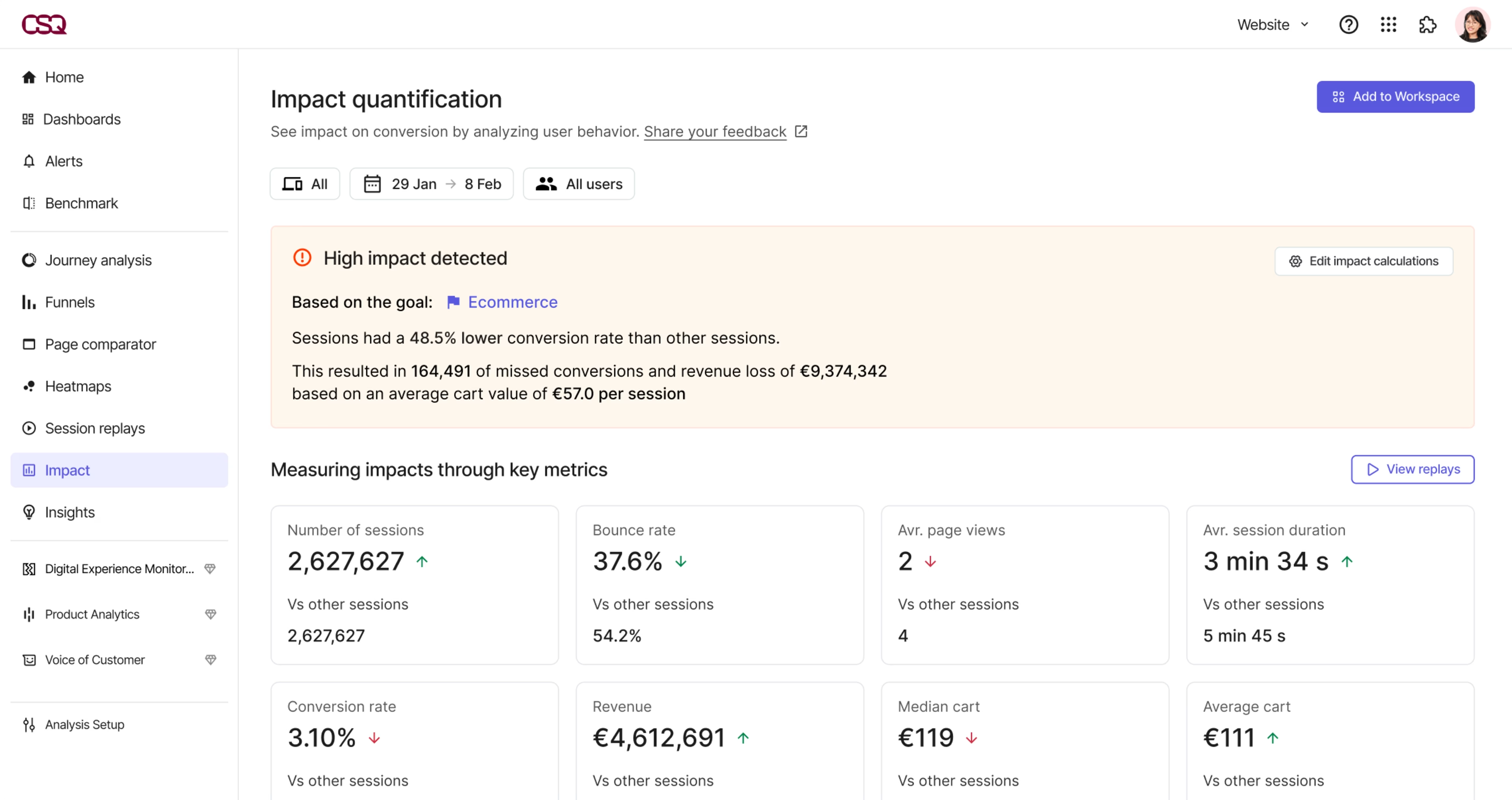Imagine having a personal assistant who could process and analyze millions of data points in the time it takes you to grab a cup of coffee. They’d spot hard-to-find patterns, clean messy datasets without a single complaint, and deliver reliable, error-free insights around the clock.
Sounds amazing, right? And that’s exactly what AI data processing offers your team. Every day, your organization generates massive amounts of customer interactions and data. But traditional processing methods leave your analysts spending too much time on tedious data preparation tasks—cleaning, organizing, and validating data—instead of uncovering the kind of insights that drive business decisions.
This guide explains what AI data processing is and how it transforms your data operations. Plus, you walk away with 5 different ways to incorporate AI into your workflows.
Key insights
Start with automation for repetitive tasks like data cleaning and validation to free up time for your team members right away
Use AI to spot patterns and surface issues across large datasets instead of spending days or weeks on manual analysis
Prioritize data privacy and security by selecting AI platforms with built-in compliance and clear data-handling approaches
What is AI data processing?
AI data processing uses artificial intelligence and machine learning (ML) to automate the information-handling process—from the moment raw data enters your system to when it appears as colorful graphs on your dashboard.
It’s not just one tool, but rather an umbrella term for all the AI-powered technologies that jump in at different stages of your data process to make things faster, more accurate, and less tedious for your team.
Here’s how AI can help throughout your data pipeline:
Data collection: automatically pull information from websites, databases, and APIs without anyone having to set up manual exports
Data cleaning: spot and fix messy data, including duplicates and typos that would normally take hours to find
Data transformation: convert raw data into consistent, usable formats
Data analysis: uncover patterns and trends without the help of data scientists
Data visualization: create charts and dashboards automatically based on your data
From start to finish, AI also helps with data management, keeping your databases organized and running smoothly behind the scenes. For example, it can archive old data, optimize storage costs, or ensure frequently accessed information loads fast—all without your IT team needing to constantly monitor things.
How does AI improve data processing and management?
Humans excel at asking the right questions and interpreting results in context, but we’re not great at processing thousands of rows of data without making mistakes or losing focus.
The good news? AI systems can crunch through massive datasets quickly and consistently, transforming how your data operations work.
Here are 3 ways data processing with AI benefits your product or data team:
1. Boosts speed and scalability
When you’re dealing with tons of data, traditional processing methods can take hours, or even days, to deliver results. Imagine manually segmenting millions of user sessions and identifying conversion patterns—yikes!
AI data processing changes that completely, making quick work of collecting or analyzing enormous datasets. According to Thomson Reuters’ 2024 Future of Professionals Report, professionals believe that AI could save them potentially 12 hours per week within 5 years. That’s hundreds of hours of freed-up time per person that could be redirected toward strategic analysis and decision-making instead.
🔥 How Apoteket used Contentsquare AI to surface insights faster
Swedish pharmacy Apoteket wanted more employees to make data-driven decisions, but not everyone was confident using analytics tools.
Archana Mishra, CRO Manager at Apoteket, says, “I’d get lots of questions because most team members, unless they were analysts, weren’t sure where to start or if they were looking at the right numbers.”
This created bottlenecks since only a handful of experts could action data insights. By using Contentsquare’s AI assistant Chat with Sense, Apoteket made behavioral insights accessible across the organization and freed up the analytics team to spend more time on strategic work.
2. Increases accuracy and consistency
When you’re doing the same task over and over again, it’s easy to make mistakes. A misplaced decimal point or a skipped data validation step can introduce errors that skew your entire analysis.
AI eliminates these consistency issues by applying the same rules and logic to every single data point. Not only does this improve accuracy, but it makes your employees happy, too. When asked about the benefits of AI, 54% of professionals said they’re most excited about AI freeing them from repetitive tasks.
3. Cuts costs and boosts revenue
As your team moves faster and makes fewer mistakes, your company saves money. You’re not paying employees overtime for rework or asking them to spend hours on labor-intensive tasks such as data cleaning.
According to McKinsey’s Global Survey on AI, respondents across most business functions reported cost savings from generative AI alone—including 43% of those in product and service development. And in addition to saving money, gen AI helps produce more of it. Around 51% of those in product or service development saw an increase in revenue.
Too often, I hear AI dismissed as an expensive, ‘nice-to-have’ tool, but that couldn’t be further from the truth. AI is a value-driving ‘must-have’ investment if you want to stay competitive.
5 ways to process data with AI
If you’re ready to put AI to work in your data operations, we have great news: you don’t need to overhaul your entire tech stack or crack open a data science textbook to get started.
Here are 5 ways to use AI data processing, each designed to tackle real challenges your team faces every day.
1. Analyze text with natural language processing (NLP)
When your customers leave feedback or reviews, they’re giving you goldmines of insight—but only if you can process that data effectively.
Natural language processing helps AI understand and analyze human language at scale, turning thousands of text responses into actionable insights.
Use NLP-powered AI tools to
Assist customers: connect users with personalized answers via helpful chatbots. (Try SAAS First or Tidio—both offer free trials.)
Detect themes: identify recurring issues or requests across hundreds of support tickets or surveys using automated tagging
Analyze sentiment: automatically categorize feedback as positive, negative, or neutral to prioritize customer needs
Understand survey results: transform open-ended responses into structured insights your team can act on
💡Pro tip: use Contentsquare’s Surveys to help you collect and process data faster. Use our AI-assisted survey creation tool to quickly generate questions based on your goals.
Then, once you have your responses, let our AI analysis tools, like built-in sentiment analysis and automated tagging, handle the processing. Or, ask Sense to give you a summary of the feedback to understand it fast.

Use Contentsquare’s Sentiment Analysis to break down survey results by positive, negative, and neutral responses and see trends over time
2. Forecast outcomes with predictive analytics
What if you could see problems heading your way—and stop them before they affect your business?
Predictive analytics uses historical data and machine learning (ML) to analyze patterns in your data to predict future behavior. For example, it might tell you which customers are likely to cancel their subscriptions next month or which product features drive the least engagement. That means you have time to plan and take action on potential issues instead of just scrambling to react.
The key is feeding these models rich Contentsquare behavioral and product data that captures the full customer experience, including
Heatmaps that show typical scroll depth and engagement patterns
Session replays that capture every click, scroll, and interaction on your site or web app
Product analytics that reveal how users engage with features across your digital products (think adoption, retention, and user journeys)
Friction signals, using Error Analysis, Speed Analysis, and Frustration Score
Voice of customer insights, from tools like Surveys, Interviews, and User Tests that show how customers really feel about your site or product
💡 Pro tip: use Contentsquare’s Data Connect to automatically send clean, structured digital experience data to your data warehouse. The tool integrates seamlessly with BigQuery, Snowflake, Databricks, Redshift, and Amazon S3, letting you connect once and sync continuously. Then, your AI and ML models can use that data (along with information from other platforms you use) to accurately predict churn or forecast conversions.
![[Visual] Data-connect-warehouses](http://images.ctfassets.net/gwbpo1m641r7/7I3BUMjz9UdK66mvBkLZNl/327db6b3de02d490f7561b5f1836f86a/Data-connect-warehouses.png?w=3840&q=100&fit=fill&fm=avif)
Data Connect makes it easy to sync Contentsquare data to your data warehouse
3. Personalize experiences for users
One-size-fits-all experiences have gone the way of landline phones—nobody wants them anymore. Now, AI-powered personalization engines analyze user behavior, preferences, and context to deliver personalized experiences at scale.
Predictive personalization lets you customize experiences based on historical data, so you can offer
Dynamic content, like homepage layouts that adapt based on user preferences and past behavior
Product recommendations, based on browsing history, purchase patterns, and similar user profiles
Personalized email campaigns, delivering well-timed messages tailored to individual engagement patterns and preferences
💡Pro tip: before you can tailor messaging effectively, you need to know what elements of your site or content need personalization the most.
Use Contentsquare’s Journey Analysis and Funnel Analysis to identify friction points and drop-offs where a more personalized approach could make a bigger impact on conversions and user satisfaction. Then, use Impact Quantification to find out how any potential change affects your revenue.

Use Impact Quantification to see how any behavior, event, or issue impacts revenue in just one click
4. Clean and prepare data automatically
You and your team probably spend more time than you’d like on data cleaning and preparation. AI automates these tedious but essential tasks, transforming messy data into ready-to-analyze datasets.
Automated data preparation handles time-consuming tasks, helping you
Find and eliminate duplicate records across data sources
Validate data, checking for accuracy, completeness, and consistency
Standardize information by putting dates and addresses in the same format
Contentsquare’s Data Connect takes this one step further by automatically syncing your clean, structured behavioral data to your data warehouse to integrate with other data—giving you a comprehensive, 360-degree customer view that’s ideal for data analytics and business intelligence.
Contentsquare’s Data Connect plays a key role in data enrichment and integration
5. Visualize data fast
Creating meaningful charts and dashboards used to require hours at your desk—and likely some specialized tools. AI changes that by suggesting the best chart types for different insights and even creating these visualizations for you.
AI-powered visualization tools instantly generate
Graphs and charts to display your data in an appealing, easy-to-understand way
Automated reports that give quick summaries and highlight key insights
Contentsquare’s Chat with Sense makes this even easier—just ask natural language questions about your data and get instant visual answers, complete with charts and suggested next steps.
![[visual] Contentsquare-chat-with-Sense](http://images.ctfassets.net/gwbpo1m641r7/6BPO13EpA9A4QfYLxx5lZq/84f05018f563ddfce24a32bd58c557d6/Contentsquare-chat-with-Sense.png?w=3840&q=100&fit=fill&fm=avif)
Use Chat with Sense as a thinking partner and assistant data analyst
Transform your data operations with AI
AI data processing is already changing how teams work with data every day. If you’re ready to save time and add consistency to your data workflows, you don’t need to overhaul everything at once.
Start small by automating one step (like creating data visualizations) or connect your behavioral data to your warehouse with a tool like Data Connect. Each step reduces errors and gives your team the capacity to focus on work that actually helps your company hit its revenue goals or improve the customer experience.
![[Visual] Stock 2 people in office](http://images.ctfassets.net/gwbpo1m641r7/3E6Xcnz962m21VwKbUtyw7/2fb57f4ada18792c86aa38b93e6e0932/5294329.jpg?w=3840&q=100&fit=fill&fm=avif)
![[Visual] Contentsquare's Content Team](http://images.ctfassets.net/gwbpo1m641r7/3IVEUbRzFIoC9mf5EJ2qHY/f25ccd2131dfd63f5c63b5b92cc4ba20/Copy_of_Copy_of_BLOG-icp-8117438.jpeg?w=1920&q=100&fit=fill&fm=avif)